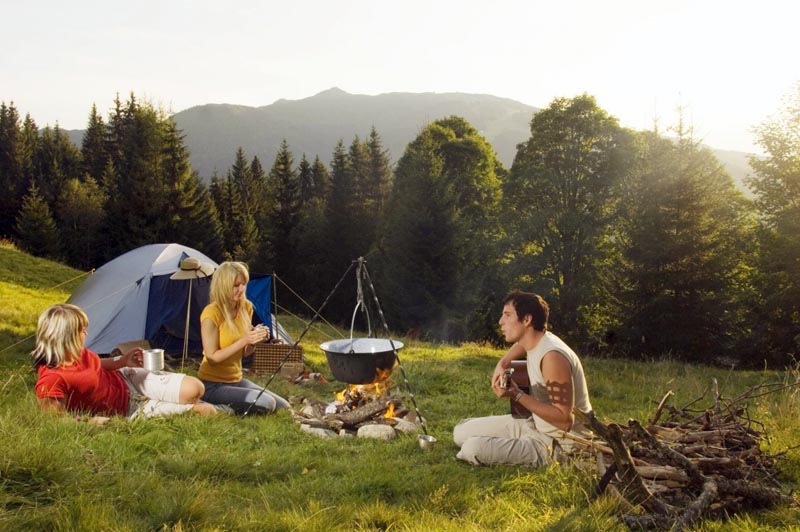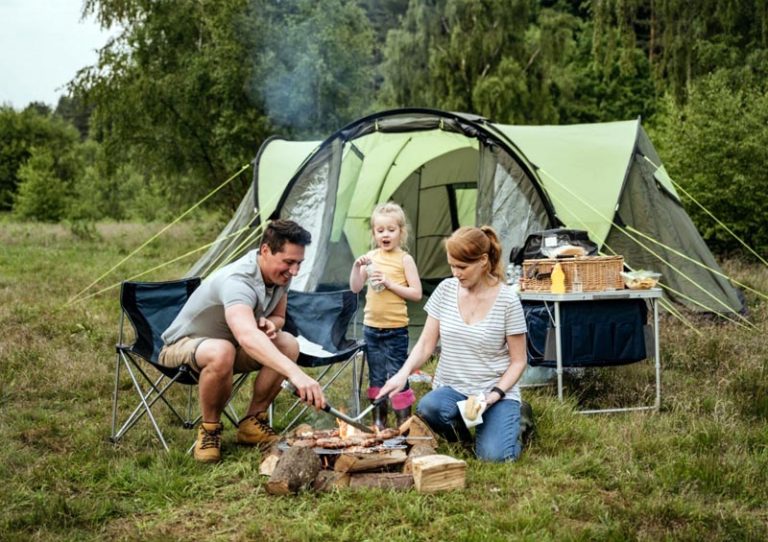When it comes to outdoor cooking, there are two popular options – campfire cooking and backpacking stoves. Both methods have their own pros and cons, and the decision of which one to use can be challenging. If you are planning a trip and are unsure about which option is best for you, this article will provide you with all the information you need to make an informed decision.
The Campfire Cooking vs. Backpacking Stoves

Campfire Cooking
Campfire cooking is a traditional method of outdoor cooking that has been used for centuries. It involves cooking food over an open fire, using pots, pans, skewers, or Dutch ovens. The following are some of the pros and cons of campfire cooking:
Pros:
- Adds to the overall camping experience: Cooking over an open fire is a classic camping activity that adds to the overall experience.
- Creates a social environment: Cooking over a campfire creates a social environment, where everyone can gather around and cook together.
- Cooking options: You can cook a variety of foods over a campfire, including hot dogs, marshmallows, and even pizza.
- Affordable: Campfire cooking is an affordable way to cook outdoors, as it does not require any special equipment or fuel.
Cons:
- Weather dependency: Campfire cooking is weather dependent, and you cannot cook over an open fire in wet or windy conditions.
- Fire safety: Cooking over an open fire requires a fire pit and proper fire safety measures, which can be a concern for some people.
- Cooking time: Cooking over a campfire can take longer than cooking on a stove, as you need to wait for the fire to heat up.
Backpacking Stoves:
Backpacking stoves are small, lightweight stoves that are designed for backpacking and camping. They run on fuel, such as propane or isobutane, and are designed to be compact and easy to pack. The following are some of the pros and cons of backpacking stoves:
Pros:
- Convenient: Backpacking stoves are convenient to use, as they are small and lightweight, making them easy to pack and carry.
- Weather-independent: Backpacking stoves are not weather dependent, and you can use them in any weather conditions.
- Quick cooking: Backpacking stoves are designed for quick cooking, and you can cook your meals in a fraction of the time it takes to cook over a campfire.
- Fuel options: Backpacking stoves come in a variety of fuel options, including propane, isobutane, and alcohol, so you can choose the option that best suits your needs.
Cons:
- Initial cost: Backpacking stoves can be expensive, especially if you are purchasing a high-end model.
- Fuel costs: Fuel costs can add up over time, especially if you are using a backpacking stove regularly.
- Maintenance: Backpacking stoves require maintenance, including cleaning and replacing parts, which can be time-consuming.
Which is Better for Your Next Trip?
The answer to this question depends on your individual needs and preferences. If you are looking for a traditional outdoor cooking experience, campfire cooking may be the best option for you. If you are looking for convenience, speed, and the ability to cook in any weather conditions, a backpacking stove may be the better choice.
Here are some factors to consider when deciding between campfire cooking and backpacking stoves for your next trip:
- Trip length: If you are going on a short trip, a backpacking stove may be the best option, as it will allow you to cook your meals quickly and efficiently. However, if you are going on a longer trip, a campfire may be a more enjoyable and affordable option.
- Group size: If you are traveling with a large group, campfire cooking may be the best option, as it creates a social atmosphere and allows everyone to cook and eat together. If you are traveling solo or with a small group, a backpacking stove may be more practical.
- Cooking preferences: If you enjoy cooking and want to experiment with different recipes, a campfire may be the best option, as you can cook a variety of foods over an open fire. If you are looking for quick and simple meals, a backpacking stove may be the better choice.
- Budget: If you are on a tight budget, campfire cooking may be the most affordable option, as it does not require any special equipment or fuel. However, if you are willing to invest in a high-end backpacking stove, it can be a worthwhile investment in the long run.
- Environmental impact: If you are concerned about the environment, campfire cooking may be the more sustainable option, as it does not require any fuel. However, if you are using a backpacking stove, be sure to purchase one that runs on a clean-burning fuel, such as propane or isobutane.
Frequently Asked Questions:
Can you cook a variety of foods over a campfire?
Yes, you can cook a variety of foods over a campfire, including hot dogs, marshmallows, and even pizza. However, cooking more complex meals may take longer and require more equipment.
Do backpacking stoves require a lot of maintenance?
Yes, backpacking stoves require maintenance, including cleaning and replacing parts. However, the amount of maintenance required will vary depending on the type of stove and how often you use it.
Is campfire cooking safe?
Campfire cooking can be safe, as long as you follow proper fire safety measures, such as digging a fire pit and keeping a bucket of water nearby.
Conclusion
In conclusion, both campfire cooking and backpacking stoves have their own pros and cons, and the best option for you will depend on your individual needs and preferences. Whether you choose campfire cooking for its traditional and social atmosphere or backpacking stoves for their convenience and speed, be sure to consider all factors, including trip length, group size, cooking preferences, budget, and environmental impact, before making your decision. Happy camping!

Anthony is a passionate outdoor enthusiast with a love for adventure and exploring the great outdoors. With years of experience hiking, camping, and rafting, he has a wealth of knowledge to share with others. Anthony’s writing captures the essence of his experiences, offering readers insights into some of the most beautiful and breathtaking landscapes in the world. Follow his journey and join the conversation as he continues to share his passion for the great outdoors.

